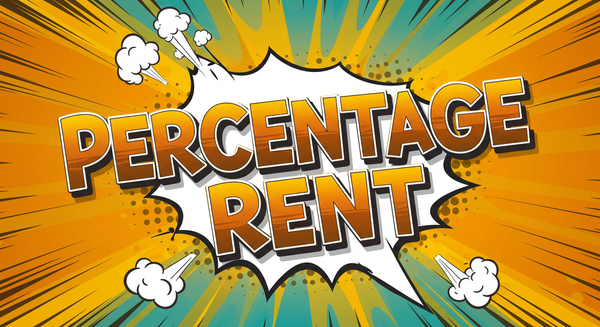Modified Gross Lease: Who Pays What, How It Works, and How It Compares to NNN
A modified gross lease is a commercial rental agreement where the tenant pays a fixed base rent plus a proportional share of specific operating expenses, like janitorial, maintenance, or utilities

When it comes to commercial real estate, no term confuses landlords and tenants faster than modified gross lease. On paper, it sounds like a compromise — part net, part gross — but in practice, it’s simply about providing clarity around who pays what.
A modified gross lease is a commercial rental agreement where the tenant pays a fixed base rent plus a proportional share of specific operating expenses, like janitorial, maintenance, or utilities. The landlord still shoulders certain costs, such as property taxes or insurance, depending on what’s negotiated.
Think of it as a middle ground between a triple net lease, where tenants pay nearly everything, and a full-service lease, where the landlord absorbs it all.
So, why should you care?
Because understanding how modified gross leases work can protect your margins, reduce tenant churn, and help you structure fair, flexible agreements in competitive markets.
In this guide, you’ll learn:
- What a modified gross lease really is
- How expenses are split — and calculated
- How it compares to NNN and other lease types
- Legal landmines and best-practice clauses
- What to include in your next lease negotiation
What Is a Modified Gross Lease?
A modified gross lease (MGL) is a type of commercial lease where both the landlord and tenant share responsibility for the property’s operating expenses. The tenant pays base rent, which is fixed, plus a negotiated portion of additional costs — typically things like janitorial, maintenance, or utilities.
It’s called “modified” because it takes the basic structure of a gross lease (where the landlord pays all expenses) and adjusts it to include tenant participation — but not to the level of a triple net (NNN) lease, where tenants carry almost all costs.
Other terms you might see:
- MG lease
- Modified lease
- Hybrid lease (occasionally)
What makes modified gross leases valuable is their flexibility.
The lease terms can be tailored based on:
- The property type (office, retail, mixed-use)
- The number of tenants
- Market competitiveness
- Each party’s budgeting preferences
For example, in a multi-tenant office building, one tenant might pay for their suite’s electricity and janitorial services, while the landlord handles property insurance and common area maintenance (CAM). Another lease in the same building might shift the utility burden back to the landlord, depending on the setup.
There’s no one-size-fits-all. That’s why clear definitions and documentation are essential — especially when you're splitting costs.
Modified Gross Lease Negotiation Checklist
Essential Items for Landlords & Property Managers
Visual Created by LandlordDoc.com
Define Base Year in the lease
Include CAM reconciliation clause with timing
Cap annual expense escalations (e.g. 5%)
Specify excluded expenses (capital repairs, legal fees)
Add Gross-Up Clause to normalize partial occupancy
Set clear tenant pro rata share formula
Require audit rights for expense transparency
Align lease term with CAM budget cycle
Who Pays What? Cost Mechanics & Math
Understanding who pays what in a modified gross lease isn’t just a paperwork exercise — it directly impacts your cash flow, tenant satisfaction, and operational predictability.
At the core is the base rent — the fixed monthly payment. Beyond that, the lease outlines additional shared expenses, calculated using specific methods.
Common shared expenses:
- Utilities: electricity, water, gas
- Janitorial services
- Maintenance: HVAC, elevator, landscaping
- Common Area Maintenance (CAM)
- Property insurance
- Real estate taxes (sometimes)
These expenses are often calculated pro rata based on the tenant’s square footage.
Formula:
Tenant’s Share = (Tenant Sq Ft ÷ Total Rentable Sq Ft) × Shared Costs
Base Year and Expense Stop
A base year sets a benchmark for expenses. Tenants pay increases above that year's levels. An expense stop caps the landlord's responsibility.
Example: If 2024 CAM costs were $10/sq ft and 2025 costs jump to $12/sq ft, the tenant pays the $2/sq ft difference.
Gross-Up Clause
Adjusts operating costs to reflect full occupancy — critical for fair cost sharing in under-occupied buildings.
Exclusions and Caps
Tenants often negotiate to exclude capital expenditures or cap annual increases.
Missing this clause could cost you thousands in unplanned back charges.
Audit Rights
Tenants may request the ability to review CAM and shared cost records annually. Smart landlords include structured audit language to maintain trust.
Modified Gross Lease vs Other Lease Types
Commercial Lease Types: Responsibility Matrix
Comprehensive Comparison of Major Lease Structures
Visual Created by LandlordDoc.com
| Lease Type | Taxes | Insurance | CAM | Utilities | Maintenance | Admin Burden | Budget Predictability |
|---|---|---|---|---|---|---|---|
| Modified Gross Lease | Shared | Shared | Shared | Tenant | Tenant | Medium | Medium-High |
| Triple Net Lease (NNN) | Tenant | Tenant | Tenant | Tenant | Tenant | High | Low |
| Full-Service (Gross) | Landlord | Landlord | Landlord | Landlord | Landlord | Low | High |
| Net Lease (N/NN) | Partial | Tenant | Partial | Tenant | Tenant | Medium-High | Variable |
Legal & Compliance Essentials
Key Pitfalls to Avoid:
- Don’t assume cost-sharing is understood
- Clearly exclude capital expenses from CAM
- Include audit clauses
- Ensure lease matches local laws and codes
Compliance Highlights
- HUD-92458: Required for rent schedules
- GASB 87: Leases over 12 months must be capitalized
- Petroff v. Crown Castle USA Inc.: Courts interpret based on terms, not labels
🔐 Clarity is your best legal defense.
Best Practices for Modified Gross Leases
1. Cap CAM Charges
Add an annual cap (3–5%) to protect tenant budgets.
2. Exclude Capital Expenditures
Define exclusions clearly to avoid disputes.
3. Define a Base Year
Set a clear benchmark for shared cost increases.
4. Include Audit Rights
Provide tenants limited rights to review annual expenses.
Real-World Example
How a Modified Gross Lease Helped Reduce Turnover
Challenge: Multi-tenant office building with rising CAM costs and tenant friction.
Solution: Shifted to modified gross lease structure with:
- Base year expense benchmark
- 5% cap on CAM increases
- Audit rights for tenants
- Capital expense exclusions
Outcome:
- Turnover dropped 22%
- NOI increased
- Lease disputes declined
- Anchor tenant renewed for 3 years
Takeaway: Transparency and structure build tenant trust.
FAQs About Modified Gross Leases
💬 Who pays property taxes in a modified gross lease?
Typically, the landlord pays base taxes, and the tenant pays increases above the base year.
💡 Always define “base year” clearly.
💬 What is a base year, and how does it work?
A benchmark year that sets the bar for expenses. Tenants pay their pro rata share of increases beyond this level.
💬 What’s the difference between modified gross and NNN?
MGL: Landlord pays some costs.
NNN: Tenant pays almost everything. MGL is more collaborative; NNN is landlord-friendly.
💬 What is a gross-up clause?
It adjusts shared costs to reflect full occupancy so tenants don’t overpay when the building isn’t 100% leased.
✅ Yes, you need one if your building isn’t fully leased.
💬 Can I convert MGL to NNN?
Yes, but it requires negotiation, notice (60+ days), and possibly a base rent reduction.
💬 What expenses are excluded from CAM?
Typically: capital improvements, legal fees, landlord salaries, and loan costs.
💬 What if CAM spikes mid-lease?
Without caps, tenants may face steep increases. Caps protect relationships and retention.
💬 Are MGLs used in residential leases?
No — they’re primarily used in commercial real estate (offices, retail, mixed-use).
💬 Biggest mistake landlords make?
Vague language. Define responsibilities, base year logic, and exclusions clearly.
Conclusion & Resources
Key Takeaways
- Define everything.
- Protect predictability.
- Use the right lease for the right property.
Resources
- Commercial Modified Gross Lease Template
- Managing CAM Costs
- Build-to-Rent Guide
- Property Management Glossary
Ready to write stronger leases, reduce friction, and keep tenants longer?
Explore our Property Management Resource Library.
Legal Disclaimer: The information on this website is sourced from publicly available materials and is provided for general informational purposes only. It is not intended as legal, financial, or accounting advice. LandlordDoc.com makes no guarantees about the accuracy or completeness of the information and assumes no liability for any errors, omissions, or outcomes related to its use.





